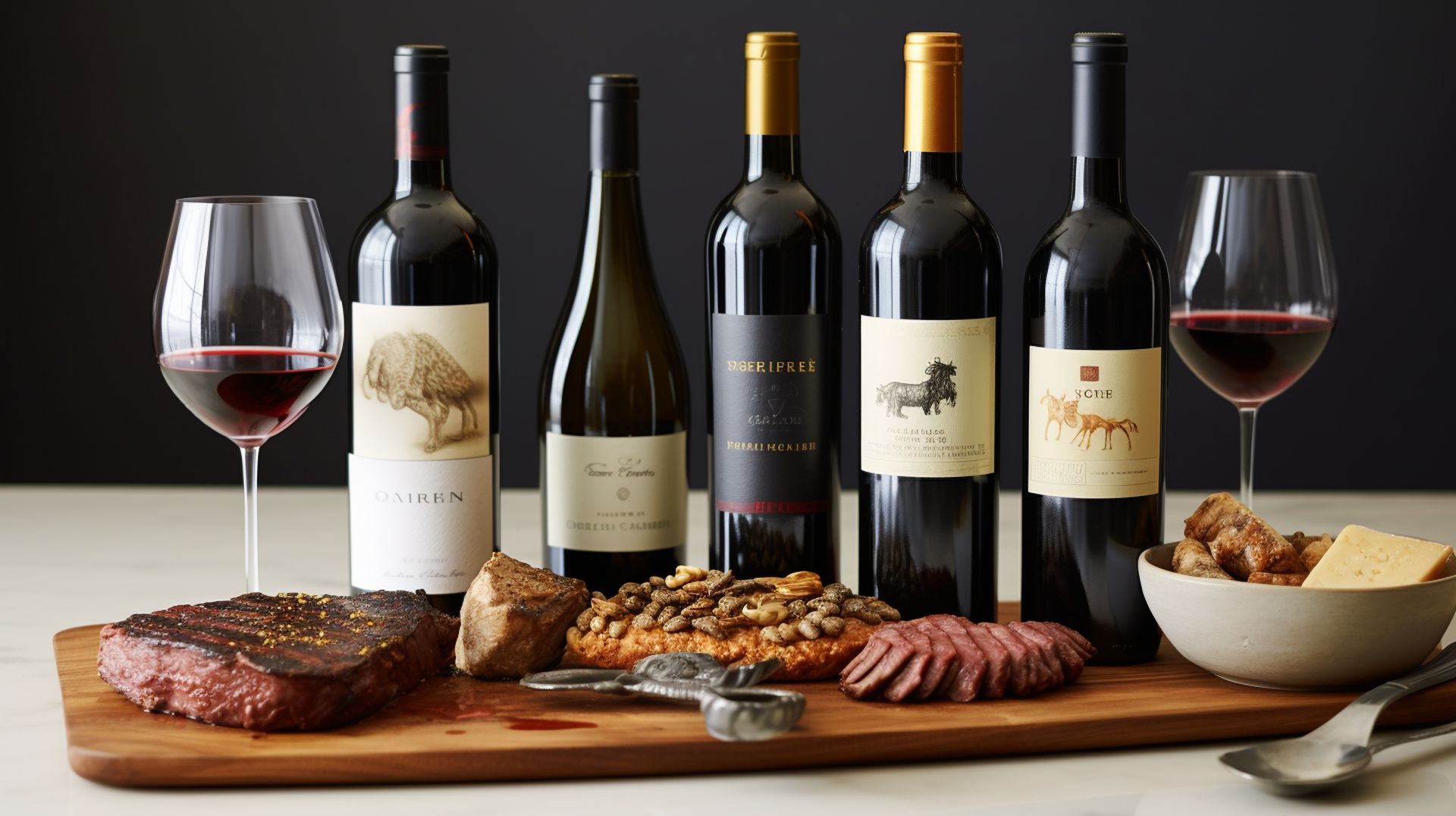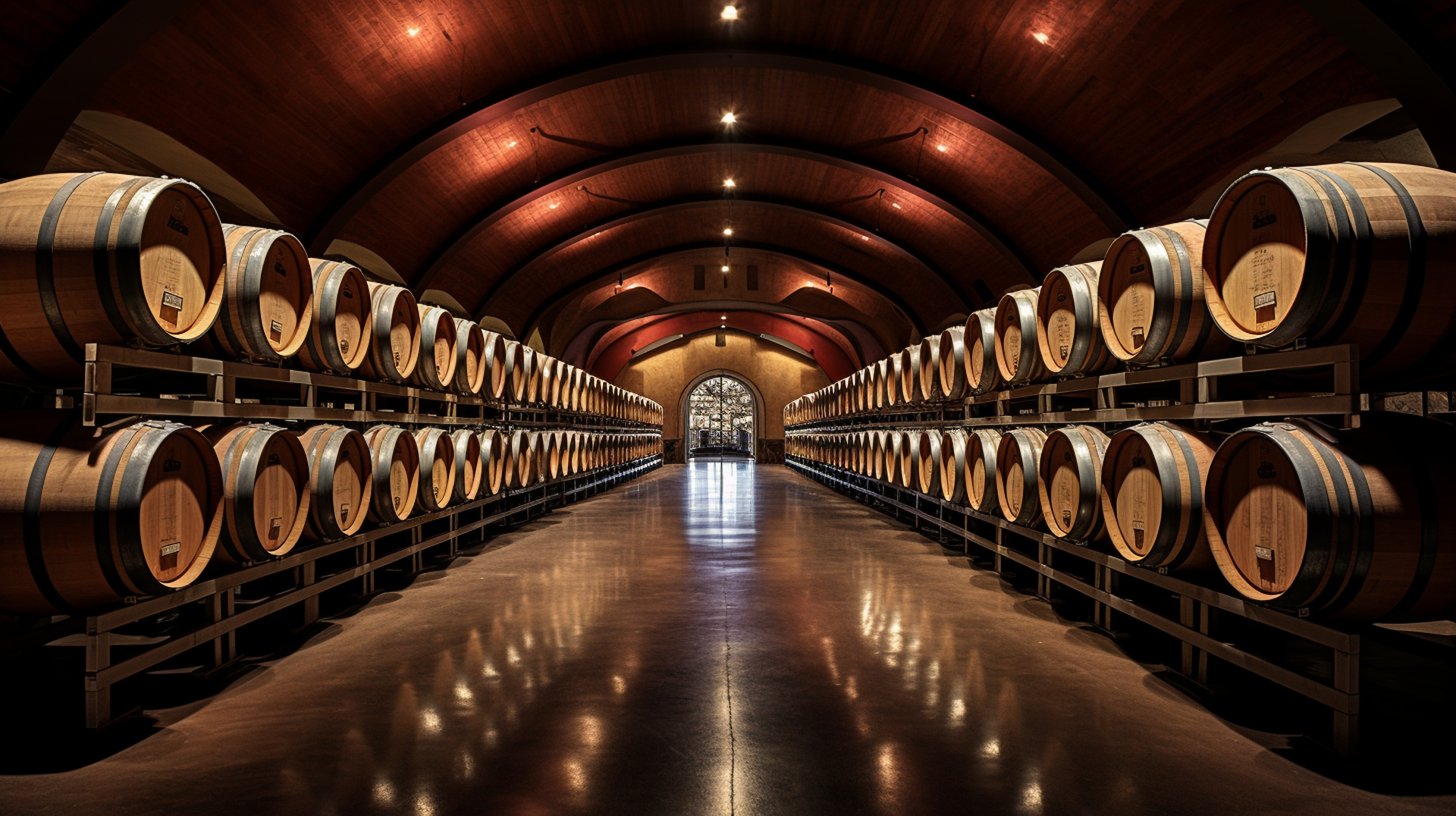Zinfandel wine, known for its bold flavor profile and versatility, has captivated the palates of wine enthusiasts worldwide. In this comprehensive guide, we will delve into the different types of Zinfandel, their food pairings, and tips for selecting the finest bottles. Discover the origins of this cherished varietal, explore notable producers and their offerings, and enhance your knowledge and appreciation of Zinfandel. Whether you are a seasoned connoisseur or a wine enthusiast embarking on a new journey, this article is your gateway to everything you need to know about Zinfandel wine.
[ez-toc]
Understanding Zinfandel Wine Varieties
When it comes to understanding Zinfandel wine varieties, it is important to note that Zinfandel comes in both red and white varieties. The red Zinfandel wine is known for its flavors of jam, blueberry, black pepper, cherry, plum, boysenberry, cranberry, and licorice. It is lighter in color than Cabernet Sauvignon and Merlot but has moderate tannin and high acidity. On the other hand, White Zinfandel is a popular choice among beginners due to its low alcohol content and pleasing sweet taste. It is actually a pink wine, but a rare white mutation exists. Zinfandel is also made into a sweet rosé wine, known as rose Zinfandel. Overall, Zinfandel offers a range of options for wine enthusiasts, from the bold and complex reds to the lighter and sweeter whites.
Zinfandel Wine’s Unique Characteristics
Zinfandel wine showcases a distinct set of characteristics that set it apart from other varieties. Known for its bold and fruit-forward nature, Zinfandel offers a unique taste profile that appeals to many wine enthusiasts. It is often described as having flavors of jam, blueberry, black pepper, cherry, plum, boysenberry, cranberry, and licorice. This red wine is full-bodied and lush, with elevated alcohol content and rich baking spice and peppery notes. It pairs exceptionally well with spiced barbecue dishes like ribs and grilled chicken. When it comes to price, Zinfandel offers a range of options, with some of the best Zinfandels available under various price points. Whether enjoyed on its own or paired with food, Zinfandel is a versatile and distinctive wine that continues to captivate wine lovers.
Ideal Food Pairings With Zinfandel

The bold and fruit-forward nature of Zinfandel wine pairs exceptionally well with a variety of dishes, making it an ideal choice for food enthusiasts. Zinfandel wine, whether it’s a red Zinfandel, white Zinfandel, or sweet Zinfandel, offers versatility when it comes to food pairings. For red Zinfandel, it pairs wonderfully with spiced barbecue dishes, such as ribs, grilled chicken, and pulled pork. When it comes to cheese, sharp cheddar, smoked gouda, and grilled halloumi are excellent choices. Vegetables like caramelized onion, fire-roasted red peppers, and grilled eggplant complement the flavors of Zinfandel. Spices and herbs like curry spice, smoked or charred flavors, cajun spice, and black pepper enhance the complexity of Zinfandel. Additionally, white Zinfandel pairs well with turkey, making it a popular choice for Thanksgiving meals. For a delightful dining experience, Zinfandel wine and tapas make an ideal food pairing.
Expert Tips for Buying Zinfandel Wine
To make an informed purchase of Zinfandel wine, it is important to consider expert tips and recommendations. Here are some key tips to keep in mind:
- Consider the style: Zinfandel wine comes in various styles, including red, white, and rosé. Decide which style you prefer before making a purchase.
- Research reputable producers: Look for well-known producers of Zinfandel wine, such as Beringer and Sutter Home. These producers are known for their quality and consistency.
- Read reviews and ratings: Before buying a specific bottle of Zinfandel, check for reviews and ratings from trusted sources. This can give you an idea of the wine’s quality and flavor profile.
- Experiment with different vintages: Zinfandel wines can vary greatly depending on the vintage. Consider trying different vintages to discover your preferences.
- Seek guidance from wine professionals: If you’re unsure about which Zinfandel wine to buy, don’t hesitate to consult wine professionals at your local wine shop or seek advice from sommeliers.
Wine Folly Book for Zinfandel Lovers
For Zinfandel enthusiasts seeking to deepen their knowledge and appreciation of this esteemed wine, the Wine Folly book offers an invaluable resource. This comprehensive book covers various topics related to wine, including Zinfandel. It provides valuable information and insights into the world of Zinfandel, including its characteristics, food pairings, and tips for buying. Whether you’re interested in understanding the alcohol percentage of Zinfandel wines, or you want to explore different brands like Beringer White Zin, Sutter Home White Zin, or Rombauer Zinfandel, this book has got you covered. Written by Madeline Puckette, an acclaimed wine expert and author, the Wine Folly book is highly recommended for those looking to enhance their wine knowledge and take their appreciation for Zinfandel to the next level.
Spotlight on Madeline Puckette and Wine Folly
Madeline Puckette and Wine Folly are highly regarded in the wine industry for their extensive expertise and passion for wine. Wine Folly, co-founded by Puckette, is a reputable source of wine information and has made significant contributions to the wine industry. Here are some key points to know about Madeline Puckette and Wine Folly:
- Madeline Puckette is a James Beard Award-winning author and Wine Communicator of the Year.
- Wine Folly was created to help people learn about wine and enhance their wine knowledge.
- Puckette’s knowledge and passion for wine are evident in the valuable information provided by Wine Folly.
- Wine Folly’s website and resources cover various topics related to wine, including the popular Zinfandel wine.
- When exploring the world of Zinfandel, wine enthusiasts can rely on Puckette and Wine Folly for reliable and insightful information on notable Zinfandel wines such as Seghesio Zinfandel and Rombauer Zin.
Tasting Notes for Zinfandel Wine
In the article ‘Everything You Need To Know About Zinfandel Wine’, the discussion now turns to the tasting notes for this distinctive wine. One notable Zinfandel to consider is the Seghesio Sonoma Zinfandel. This wine offers a bold and fruit-forward experience, with flavors of dark berries such as plums, blackberries, and blueberries. Spices like star anise and peppercorn complement it, adding complexity and depth. Aging in new oak barrels can introduce notes of cinnamon, clove, caramel, and vanilla. Another renowned Zinfandel is the Deadly Zins Zinfandel by Seghesio Family Vineyards. This wine is known for its full-bodied and lush character, with elevated alcohol levels. Overall, Zinfandel wines showcase rich fruit flavors, spice notes, and a velvety texture, making them a delightful choice for wine enthusiasts.
Key Zinfandel Growing Regions
Moving on to the next aspect of Zinfandel wine, let’s explore the key regions where this grape variety thrives. Zinfandel is primarily grown in California, particularly in regions such as Lodi, Paso Robles, North Coast, and Sierra Foothills. These areas have a Mediterranean climate with warm days and cool nights, creating ideal conditions for Zinfandel to flourish. In Italy, Zinfandel is known as Primitivo and is produced in the region of Puglia. Other regions around the world, including Australia, Chile, Canada, and South Africa, also cultivate Zinfandel. These diverse growing regions contribute to the unique characteristics and flavors found in Zinfandel wines, ranging from the bold and jammy old vine Zins to the crisp and refreshing white Zinfandel white wines.
Basic Facts About Zinfandel Wine
Zinfandel wine is a versatile and widely cultivated grape variety that offers a range of flavors and styles. It is produced from the black-skinned Zinfandel grape, which is genetically equivalent to the Croatian grapes Crljenak Kaštelanski and Tribidrag. Zinfandel is primarily grown in the United States, particularly in California, where it is the most widespread variety. It is also produced in Italy, where it is known as Primitivo, and in other countries such as Australia, Chile, Canada, and South Africa. Zinfandel wines can be red, dry, and still, but rosé and sweet late-harvest examples can also be found. They are known for their bold, fruit-forward flavors, including dark fruits like plums and blackberries, as well as spices like peppercorn and star anise. Zinfandel wines pair well with spicy or sauce-slathered grilled or barbecued meats, and they are often characterized by their generous ripeness and spice throughout.
The Origins of Zinfandel Wine
The historical origins of Zinfandel wine can be traced back to its introduction in the United States in the mid-19th century. It is believed that Zinfandel may have arrived in the US through the Imperial Nursery in Vienna, Austria. George Gibbs, a horticulturist on Long Island, received shipments of grapes from Europe between 1820 and 1829, which may have included Zinfandel. The name ‘Zinfandel’ may have derived from the Hungarian ‘tzinifándli,’ which is believed to be a modification of the German Zierfandler. Zinfandel was recommended as a table grape in Boston by 1835, and it was brought to California during the Gold Rush in the 1850s. Joseph W. Osborne is credited with potentially making the first wine from Zinfandel in California. By the end of the 19th century, Zinfandel had become the most widespread grape variety in California.
Why You Should Drink Zinfandel
Exploring the rich history and origins of Zinfandel wine sets the stage for understanding why this unique variety is worth experiencing. Zinfandel is considered the most American of grapes and is often regarded as the benchmark for American wine, similar to jazz in American music. It offers complexity and layers that are often overlooked. One of the reasons to drink Zinfandel is its versatility in food pairing, particularly with spicy or sauce-slathered grilled or barbecued meats. Zinfandel is generous, ripe, and has plenty of spice throughout, making it an excellent companion for flavorful dishes. With its full-bodied nature, Zinfandel is full of dark fruit flavors like plums, blackberries, and blueberries, often counterbalanced with spices like peppercorn and star anise. It also pairs well with creamy and salty cheeses, as well as desserts. Overall, Zinfandel is a wine that delivers a memorable and enjoyable experience.

Specific Characteristics and Tasting Notes
When evaluating Zinfandel wine, it is important to note its specific characteristics and tasting notes. Zinfandel is a full-bodied red wine that is known for its dark fruit flavors such as plums, blackberries, and blueberries. These flavors are often counterbalanced with spices like peppercorn and star anise. Aging in new oak can add additional notes of cinnamon, clove, caramel, and vanilla. Top producers often create single-vineyard bottlings to showcase the specific characteristics of the grapes. In terms of food pairings, Zinfandel pairs well with creamy and salty cheeses, as well as desserts. Notable producers of Zinfandel include Ridge Vineyards, Turley Wine Cellars, Cantine Due Palme, Elyse Winery, and Once and Future Wine Company.
Notable Zinfandel Wine Producers
Who are some notable producers of Zinfandel wine? There are several esteemed producers of Zinfandel wine that have made a significant impact in the industry. Ridge Vineyards is widely recognized for its exceptional Zinfandels and is a mainstay in serious wine collections. Turley Wine Cellars is considered one of the legends of California wine and is highly regarded for its Zinfandel offerings. Cantine Due Palme, located in Puglia, Italy, produces the renowned 2019 San Gaetano Primitivo di Manduria. Elyse Winery is known for its St. Peter’s Church Zinfandel, made from century-old vines. Additionally, Once and Future Wine Company, led by Joel Peterson, offers a range of single vineyard Zinfandels that showcase the unique characteristics of each site. These notable producers consistently deliver exceptional Zinfandel wines that are highly sought after by wine enthusiasts.
Unraveling the History and Origins of Zinfandel
Uncovering the History and Origins of Zinfandel wine reveals its fascinating journey from Europe to the United States, shaping its identity as an iconic American grape variety.
- Zinfandel’s genetic equivalent can be found in Croatian grapes such as Crljenak Kaštelanski and Tribidrag.
- The grape made its way to Italy in the 18th century and was known as Primitivo, while in Montenegro, it was called Kratošija.
- Zinfandel arrived in the United States during the mid-19th century, possibly through the Imperial Nursery in Vienna, Austria.
- It was recommended as a table grape in Boston by 1835.
- Zinfandel gained popularity in California during the Gold Rush in the 1850s.
- Joseph W. Osborne may have produced the first wine from Zinfandel in California.
- By the end of the 19th century, Zinfandel became the most widespread grape variety in California.
- However, it fell into obscurity during Prohibition as it was mostly used in undistinguished fortified wines.
The history and origins of Zinfandel highlight its resilience and adaptability, making it an integral part of the American wine landscape.
If you like this content we proudly suggest our another article about Vino Tinto: Vino Tinto Adventure: Exploring the Vibrant World of Spanish Reds


